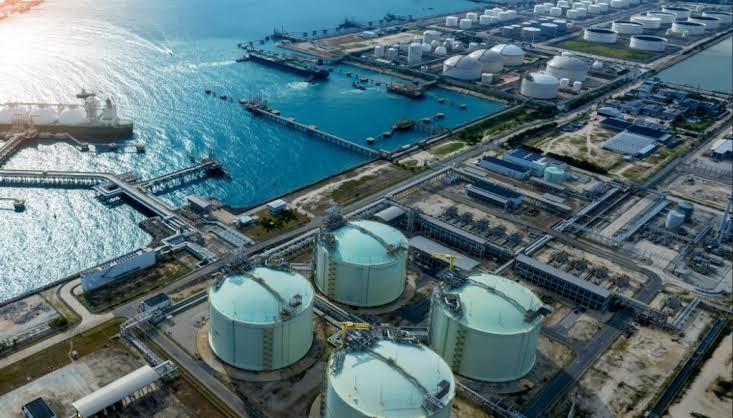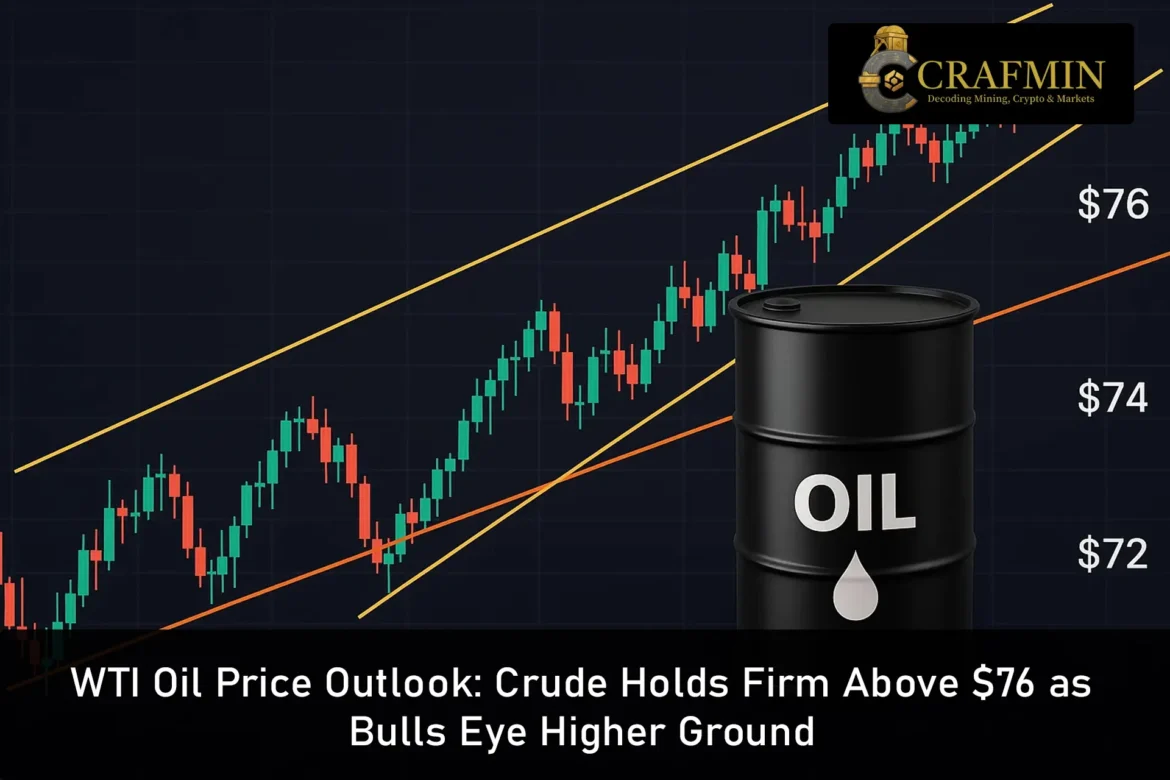Crude oil is once again in the spotlight. West Texas Intermediate (WTI) has comfortably remained above the $76 level, and market participants are increasingly focused on whether the rally has room to run. With strengthening bullish indicators, traders are closely monitoring the price for any breakout cues as the outlook for global oil markets continues to improve.
Momentum appears to be building in favour of further upside, with analysts pinpointing the $77.50 to $78.00 range as the next key resistance zone. For now, the question isn’t if oil can rise—but how far the rally might extend before the market meets serious resistance.

WTI Crude Maintains Strength Above $76 as Uptrend Gains Momentum ( Image Source: FXLeaders )
Fundamentals Favour the Bulls
This current push isn’t purely speculative. A mix of tightening supply and steady demand is supporting the recent price movements. Stockpiles at the Cushing, Oklahoma hub—America’s key oil delivery point—are falling quicker than expected. This signals potential supply tightness in the short term.
Meanwhile, forecasts from OPEC and the International Energy Agency (IEA) remain positive despite global economic uncertainties. Northern Hemisphere summer travel is fuelling stronger consumption, while refiners are enjoying solid margins, further driving demand.
Together, these elements form a bullish backdrop that continues to strengthen WTI’s appeal.
Charting the Path: Technical Signals Stay Positive
On the technical front, WTI crude remains firmly above crucial support levels. Price action is currently holding over the 20-day Exponential Moving Average (EMA), reinforcing bullish sentiment among traders.
Momentum indicators are also flashing green. The Relative Strength Index (RSI) is trending upward but remains below the overbought zone—indicating room for further appreciation without immediate risk of a pullback.
Should the price breach and close above $76.80, it could unlock a path toward $78.00, and possibly extend towards $79.30. On the flip side, any retracement would likely see the $75.20–$75.50 area act as a strong support base, offering potential buy-the-dip opportunities.
#Crudeoil price today: WTI price bearish at European opening
POSTING SURE SHOT #WTI SIGNALS.https://t.co/QtUc4oQG00
West Texas Intermediate (WTI) #Oil price falls on Friday, early in the European session. WTI trades at $72.92 per barrel pic.twitter.com/oibU50v4x9
— Jane (@ElamraniSa81909) June 20, 2025
Broader Implications: Why It Matters
The rise in oil prices isn’t just a trading story—it’s a global economic event. For consumers, it can translate into higher fuel costs and increased transport expenses. For businesses, particularly those reliant on logistics and travel, it poses challenges in budget forecasting.
Oil-importing countries may find themselves reassessing currency strategies and fiscal policies, while exporters benefit from stronger revenue flows. Meanwhile, policymakers are watching crude prices closely as part of inflation monitoring, especially in economies grappling with cost-of-living concerns.
This rally is not just of interest to commodity traders—it affects households, industries, and governments alike.
What’s Driving the Uptrend?
Several key catalysts are underpinning WTI’s rise:
- Supply Side Constraints: The latest U.S. inventory data indicates a faster-than-expected drawdown, particularly at Cushing.
- OPEC+ Commitment: Production limits remain in place, especially among leading producers in the Gulf, maintaining market balance.
- Geopolitical Risks: Ongoing unrest in the Middle East and North Africa adds a risk premium to global supply projections.
- Investor Confidence: A general pick-up in global risk appetite is pushing more funds into energy commodities.
This cocktail of supply challenges and stable demand is fuelling market confidence and creating room for further price gains.
Oil Futures Signal Growing Optimism
Futures markets are aligning with the bullish narrative. WTI futures contracts are attracting increased investor interest, with growing open interest suggesting greater conviction in higher prices.
The curve remains in backwardation—a condition where near-term contracts are priced higher than longer-term ones—implying current supply tightness. This market structure often reflects real-time demand strength over future uncertainty.
Large institutional investors are also tilting bullish, with long positions outnumbering shorts for a second week, underlining strengthening sentiment in oil.
The Trader’s Lens: Short-Term Strategy or Longer-Term Shift?
The key question now is whether this rally is a short-lived surge or the early stages of a longer-term trend.
For intraday and short-term traders, the strategy appears to be buying dips above $75.50 and targeting breakouts above $76.80. This approach remains supported as long as technical signals remain constructive and news flows stay bullish.
Longer-term investors are looking for more confirmation—whether from consistent demand growth, deeper inventory declines, or sustained geopolitical risk—that the supply-demand dynamic will remain tight.
Market watchers are keeping a close eye on China’s consumption patterns, U.S. economic indicators, and central bank policy shifts, all of which could steer the market’s direction.
Key Factors to Monitor
Looking ahead, several events and data releases could heavily influence WTI’s trajectory:
- S. EIA Inventory Reports: Weekly data on stockpiles can validate—or challenge—the tightening narrative.
- OPEC+ Updates: Any signal of policy shift or non-compliance can sway market sentiment quickly.
- China’s Energy Demand: Stronger consumption from the world’s largest importer would add another leg to the rally.
- S. Dollar Movements: A weakening greenback tends to lift oil prices; Fed decisions remain crucial.
Final Take: Momentum Favors the Bulls—for Now
WTI crude oil’s position above $76 sends a strong message. Backed by supply constraints and consistent demand, this uptrend appears grounded in more than just market speculation.
While risks remain—both geopolitical and economic—the current setup offers favourable conditions for further gains. Traders would do well to remain agile and alert, as technical signals align with a fundamentally supportive environment.
In today’s energy markets, WTI is not just holding firm—it’s making a statement.

